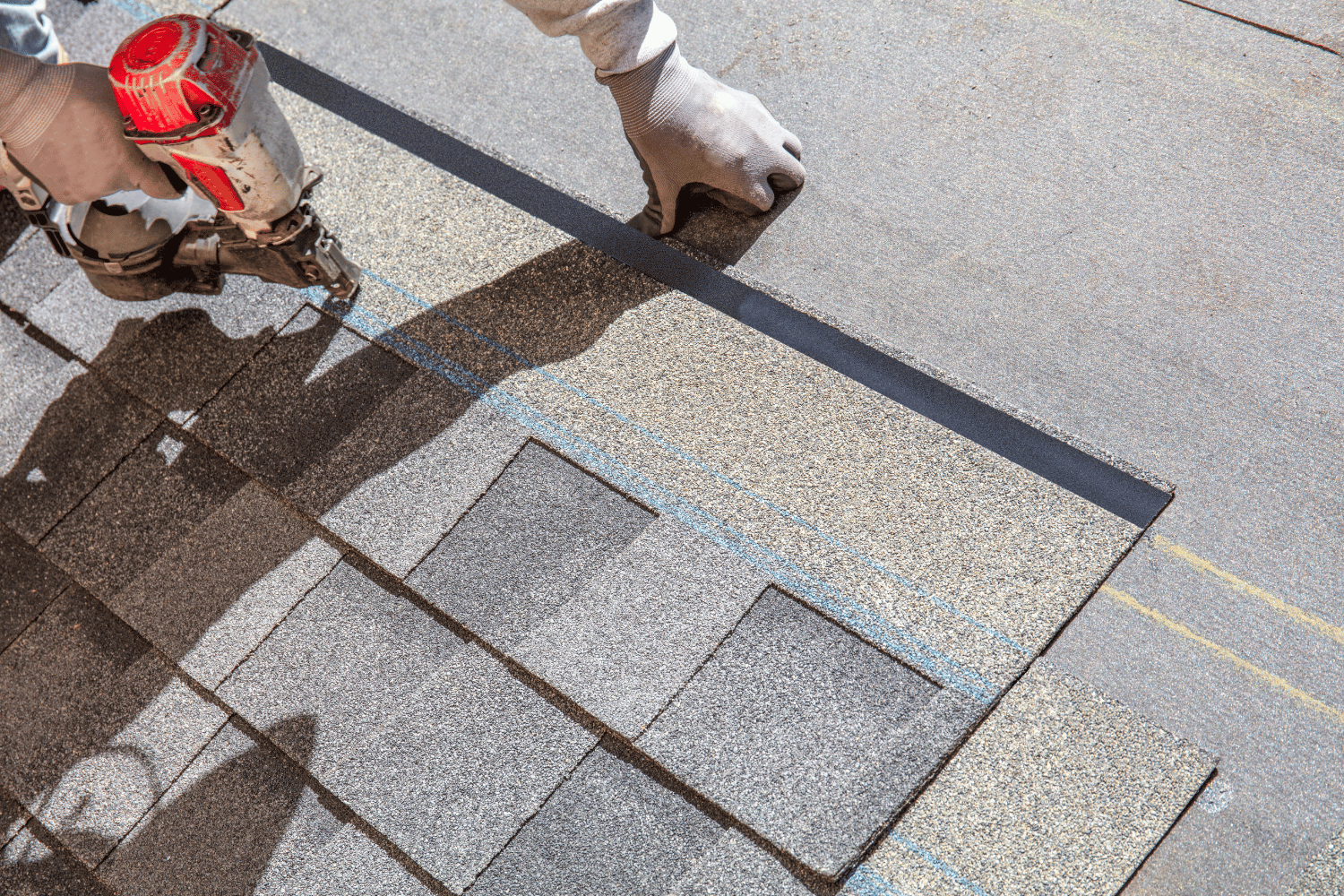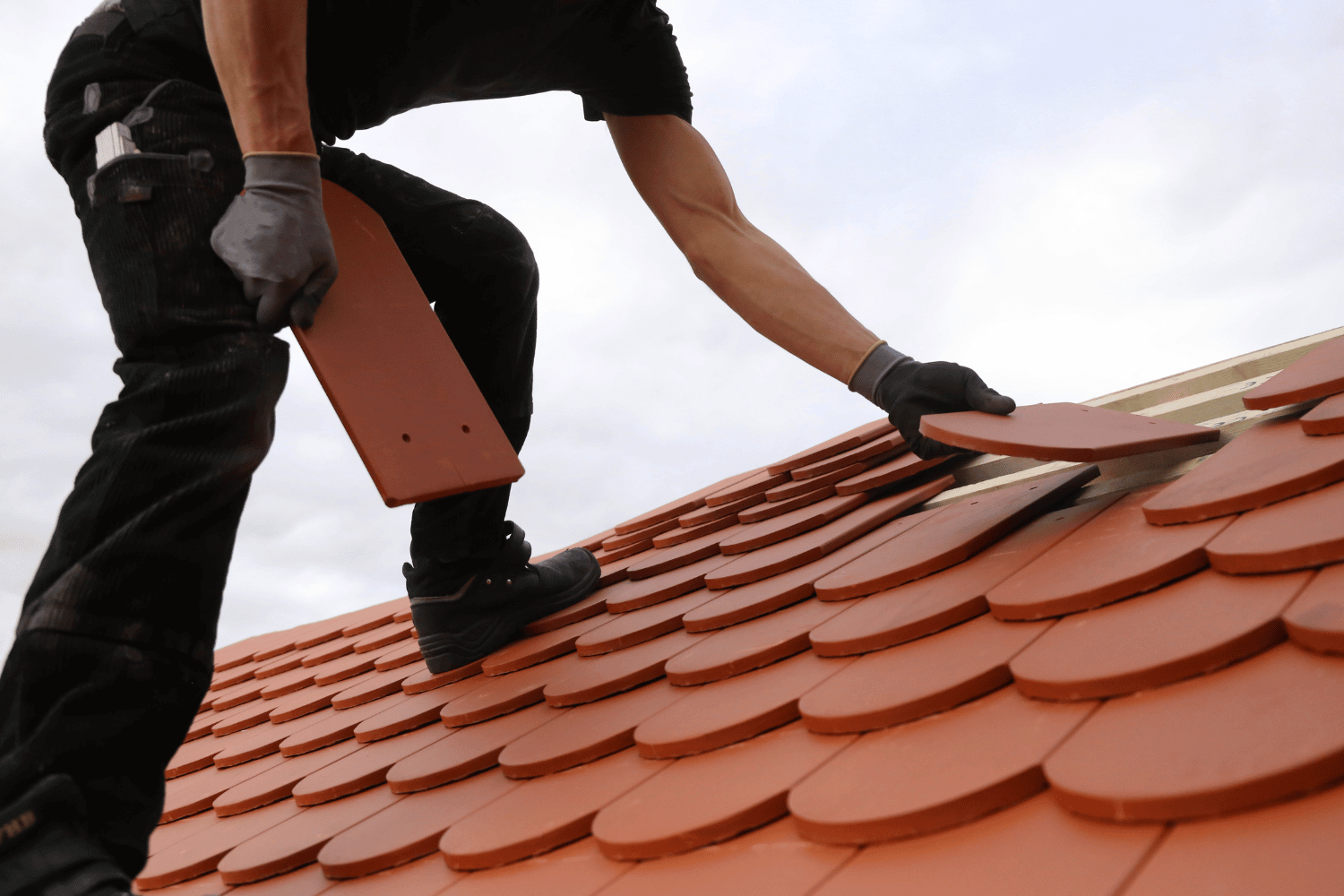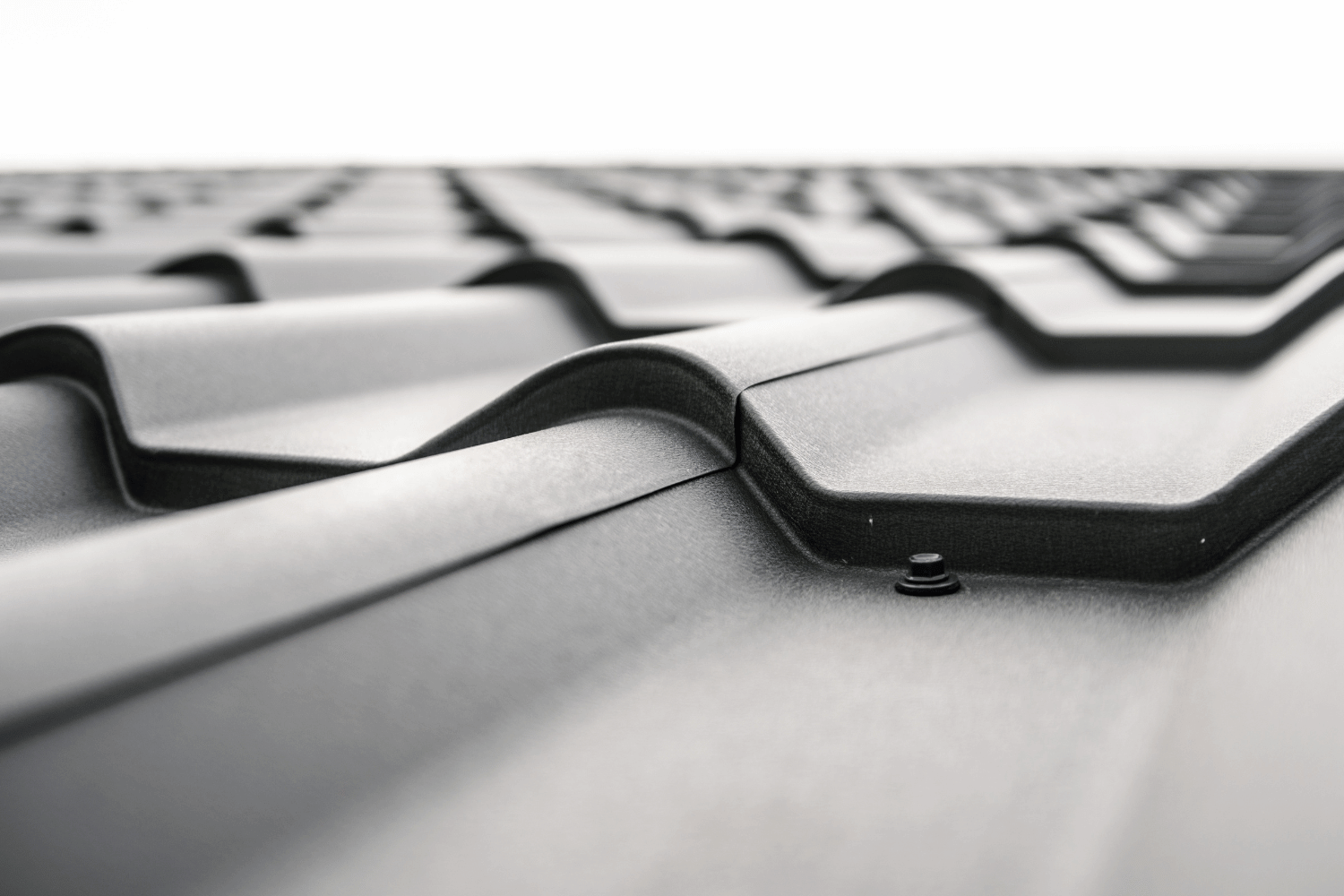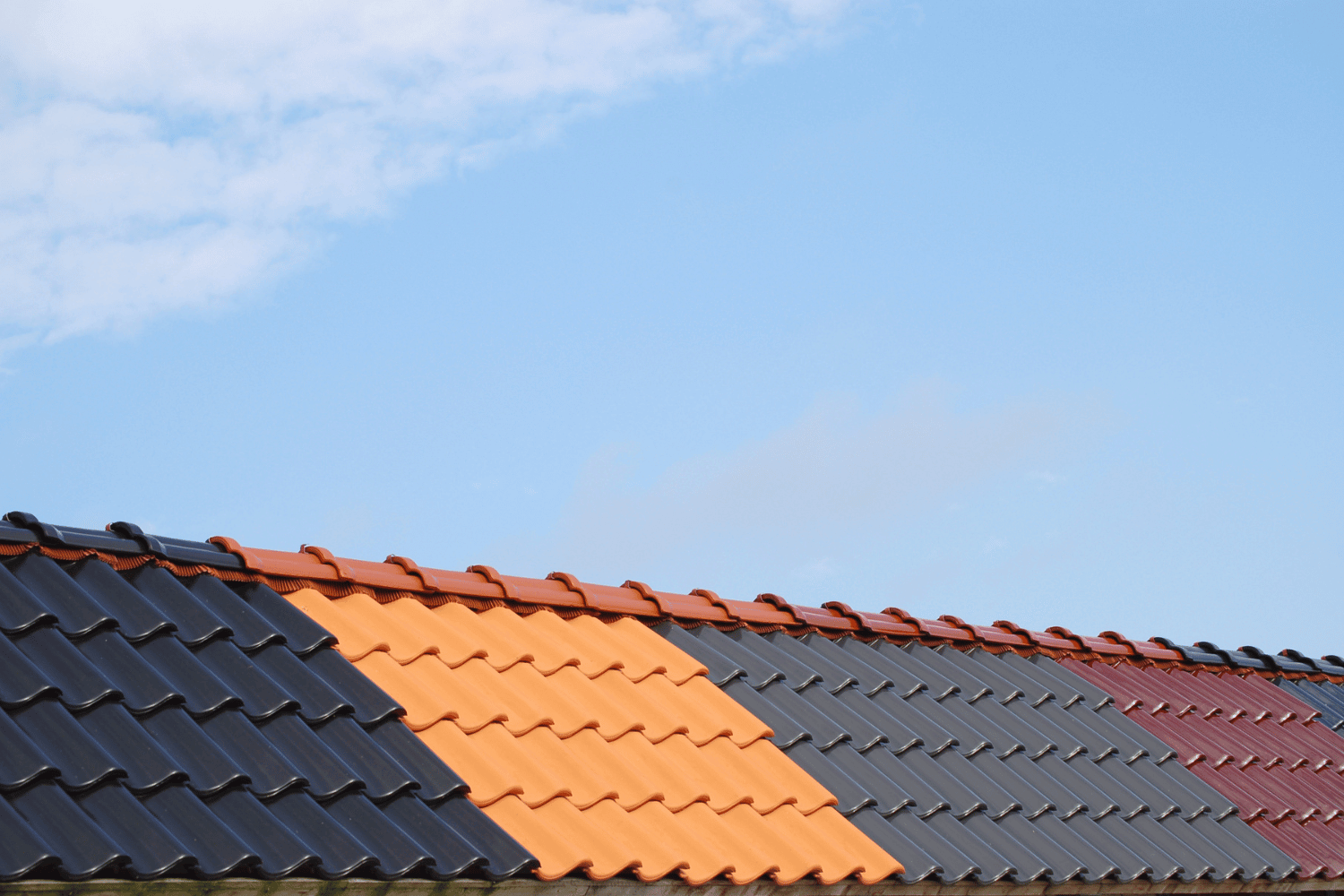A composite roof is made from a blend of materials like asphalt, fiberglass, and recycled products. In this article, we will explore what is composite roof, including its types, benefits, costs, and installation.
Key Takeaways
-
Composite roofing combines materials like synthetic polymers and recycled content, delivering durability, low maintenance, and aesthetic versatility comparable to traditional materials.
-
The benefits of composite roofing include a lifespan of up to 50 years, resilience against extreme weather, and eco-friendliness due to the use of recycled materials and energy efficiency improvements.
-
While initial costs for composite roofing can be higher than alternatives, long-term savings from reduced maintenance and fewer replacements make it a cost-effective choice for homeowners.
Understanding Composite Roofing

An illustration depicting various composite roofing materials, showcasing what is composite roof.
Composite roofing represents a blend of various roofing materials, offering a versatile, durable, and low-maintenance solution for homeowners.
It is made from a combination of:
-
synthetic polymer
-
recycled materials
-
asphalt
-
fiberglass
-
sometimes slate and wood
This mix of materials results in a product that can withstand the test of time while mimicking the appearance of natural materials like slate or wood shakes.
One of the key characteristics of composite roofing is its versatility. It can be manufactured to resemble many traditional roofing materials, providing the aesthetic appeal of natural products without the associated drawbacks. For instance, composite shingles can look like slate, wood shakes, or classic shingles, making it an attractive option for various architectural styles.
Moreover, composite roofing materials often feature protective coatings that resist UV rays and prevent sun damage, ensuring the roof maintains its appearance and functionality over time. These benefits make composite roofs a compelling choice for homeowners looking for a reliable and visually appealing roofing solution.
Types of Composite Roofing Materials
There are several types of composite roofing materials available, each designed to replicate the look of traditional roofing materials while offering modern advantages. The primary categories include 3-tab shingles, architectural shingles, and luxury shingles.
3-tab shingles are the most economical option, typically made from a single layer of asphalt. They are lightweight and easy to install, making them a popular choice for budget-conscious homeowners. Architectural shingles, also known as laminate shingles, feature a multi-layer design that enhances durability and provides a more textured appearance. Luxury shingles are designed for high-end aesthetics and are the heaviest and most durable type of composite shingles.
Beyond these categories, there are synthetic wood shakes, rubber roofing shingles, and composite slate tiles. Synthetic wood shakes are made from engineered polymers, recycled plastics, or cellulose fibers, offering the appearance of wood without the susceptibility to rot, insects, or fire.
Rubber roofing shingles are durable, eco-friendly, and can resemble slate or wood shakes, providing excellent weather resistance. Composite slate tiles mimic natural slate but are lighter and made from plastic/polymer materials and rubber compounds.
Benefits of Composite Roofs

An illustration showing a cost analysis chart for composite roofing materials.
Composite roofs offer numerous benefits that make them an attractive option for homeowners. These advantages include durability and longevity, aesthetic appeal, and eco-friendliness.
Each of these benefits will be explored in detail in the following subsections.
Durability and Longevity
One of the most significant advantages of composite shingles is their impressive lifespan, which can reach up to 50 years, compared to the 20 to 30 years typical for asphalt shingles. This extended lifespan translates to long-term savings, as homeowners won’t need to replace their roofs as frequently. Additionally, composite roofing is designed to withstand extreme weather conditions, including winds of up to 190 mph, making it a robust option for areas prone to severe weather.
Composite roofing materials also offer higher resistance to hail damage compared to traditional materials. This durability is often reflected in extended warranties provided by manufacturers, ensuring peace of mind for homeowners. The minimal maintenance requirements further enhance the appeal of composite roofs, as they remain in excellent condition with little upkeep needed.
Aesthetic Appeal
Composite roofing not only provides durability but also enhances the aesthetic appeal of homes. These materials can be designed to mimic natural materials like slate and cedar, offering a visually appealing alternative to traditional roofing options. The variety of styles, shapes, and colors available for composite roofing allows homeowners to personalize their roofs to match their desired aesthetic.
Choosing the right color and style for your composite shingles is crucial, especially in areas with high sun and weather exposure. Despite potential fading due to sun exposure, composite roofing materials maintain their performance and continue to enhance the appearance of homes. This versatility and aesthetic appeal make composite roofing a popular choice for homeowners looking to improve their property’s curb appeal.
Eco-Friendliness
Environmental sustainability is another significant benefit of composite roofing. Many composite roofs are made from recycled materials such as plastics and rubber, contributing to eco-friendliness. The long lifespan of composite roofing materials also reduces the need for frequent replacements, minimizing waste and contributing to landfill reduction.
Composite roofing tiles can improve energy efficiency by helping to regulate indoor temperatures, which decreases overall energy consumption and environmental impact. Furthermore, the disposal and recycling of composite roofing materials at the end of their lifespan support responsible environmental practices.
These eco-friendly attributes make composite roofing an excellent choice for environmentally conscious homeowners.
Cost Analysis of Composite Roofing

A vibrant illustration highlighting the benefits of composite roofs, including durability and eco-friendliness.
When considering composite roofing, it’s essential to understand the associated costs. The material costs for composite shingles typically range from $100 to $1,500 per square, depending on the type and quality of the product. For a typical 1,700-square-foot roof, the cost of materials alone can be between $10,880 and $16,320. However, the initial higher cost of composite shingles can be offset by their durability and long lifespan.
Installation costs are another crucial factor. Installing composite shingles generally requires skilled labor, which can drive up the overall cost. Labor costs can account for approximately 60% of the total installation cost. Despite these higher upfront costs, the long-term savings from reduced maintenance and fewer replacements make composite roofing a cost-effective option in the long run.
Several factors can influence the overall cost of composite roofing, including the type of product, the size of the roof, the location, and the complexity of the installation. Homeowners should consider these factors when budgeting for a new roof and consult with a professional roofing contractor to get an accurate estimate.
Installation Process of Composite Roofs

An illustration of the installation process of composite roofs, showing various steps involved.
Installing composite roofs involves several crucial steps to ensure a long-lasting and effective roofing system. The process begins with the removal of existing roofing materials, which allows for a thorough inspection of the roof deck for any damage that needs repair. This step is essential to provide a solid foundation for the new composite shingles.
Next, a synthetic water-resistant underlayment is installed to add an extra layer of protection against moisture. The composite shingles are then installed in overlapping rows to ensure proper water drainage and protection against the elements. The lightweight nature of composite roofing materials makes them easier to install compared to heavier materials like slate.
Using high-quality materials and skilled labor is critical to maximizing the lifespan and performance of a composite roof. The installation process for composite shingles is generally smoother, resulting in reduced labor costs and a quicker installation time. Homeowners should work with experienced roofing professionals to ensure proper installation and long-term durability.
Comparing Composite Roofing to Other Roofing Materials

A comparative illustration of composite roofing vs other roofing materials.
Composite roofing stands out when compared to other roofing materials due to its durability, aesthetic appeal, and eco-friendliness.
The following subsections will compare composite roofing with asphalt shingles, clay and concrete tiles, and wood shake roofing, highlighting the unique advantages and disadvantages of each.
Asphalt Shingles
Asphalt shingles are a popular and cost-effective roofing material known for their ease of installation. However, asphalt shingle roofs typically have a shorter lifespan, lasting around 15 to 20 years, which is significantly less than composite shingles that can last up to 50 years. This shorter lifespan results in higher long-term costs due to more frequent replacements.
Additionally, the maintenance requirements for asphalt shingles are higher compared to composite shingles, which require minimal upkeep. While asphalt shingles may be a budget-friendly option initially, the long-term benefits of composite shingles make them a more cost-effective choice over time.
Clay and Concrete Tiles
Clay tiles and concrete tiles are known for their durability and distinct aesthetic appeal. However, their heavy weight makes installation more complex and requires additional structural support. This added complexity can increase both material and labor costs, making clay tiles and concrete tiles a more expensive option compared to composite roof tiles.
Composite roofing materials offer a variety of aesthetic options that can mimic the look of traditional clay and concrete tiles without the associated weight and cost. This makes composite roofing an attractive alternative for homeowners seeking the visual appeal of clay or concrete tiles but with easier installation and lower costs, including options like composite roof tile.
Wood Shake Roofing
Wood shake roofing provides a natural and rustic appearance that many homeowners find appealing. However, wood shakes are susceptible to rot, insect damage, and require careful maintenance to ensure their longevity. This higher maintenance requirement can lead to increased costs and effort over time.
Composite roofing, on the other hand, is designed to withstand harsh weather conditions and requires significantly less maintenance. It offers the aesthetic appeal of wood shakes without the associated drawbacks, making it a more durable and cost-effective option for homeowners, especially when considering composite roof shingles.
Choosing the Right Composite Roof for Your Home
Choosing the appropriate composite roof for your home requires evaluating multiple factors. It’s important to take all relevant aspects into account. The climate in your area plays a crucial role, as severe weather conditions may necessitate specific roofing types, such as steep roofs in snowy climates. Energy efficiency is another important consideration, as the right roofing materials can impact your utility bills and overall comfort.
Personal taste and the architecture of your home should also influence your choice of roofing style. A well-chosen roof can enhance your home’s curb appeal and reflect your personal style. Additionally, it’s essential to consider long-term costs, including potential maintenance and repairs, when setting your roofing budget.
Consulting with a professional roofing contractor can provide valuable insights tailored to your specific situation and ensure proper installation. It’s also important to check local building codes and HOA rules, as they may restrict your choice of roofing materials. By considering these factors, homeowners can make an informed decision and select the best composite roof for their home.
Summary
In conclusion, composite roofing offers numerous benefits, including durability, aesthetic appeal, and eco-friendliness. It is a versatile and cost-effective solution that can mimic the look of traditional materials while providing modern advantages. Whether you’re looking for a roof that can withstand harsh weather conditions, enhance your home’s appearance, or contribute to environmental sustainability, composite roofing is an excellent choice.
By understanding the different types of composite roofing materials, the benefits they offer, and the installation process, homeowners can make an informed decision when selecting their next roof. We encourage you to consider composite roofing for your next project and experience the long-term benefits it provides.
Frequently Asked Questions
What are the main materials used in composite roofing?
Composite roofing primarily consists of synthetic polymers, recycled materials, asphalt, fiberglass, and may also incorporate slate and wood. These materials contribute to its durability and aesthetic appeal.
How long do composite shingles typically last?
Composite shingles typically last up to 50 years, offering a more durable option compared to traditional asphalt shingles, which usually last 15 to 20 years.
Are composite roofs environmentally friendly?
Composite roofs are environmentally friendly as they often utilize recycled materials, enhancing energy efficiency and minimizing waste. Choosing such materials supports sustainable building practices.
What is the cost range for composite shingles?
The cost of composite shingles generally ranges from $100 to $1,500 per square, varying based on the type and quality of the shingles. It is advisable to consider your specific needs and budget when selecting the appropriate option.
How does the installation process of composite roofs compare to traditional roofing materials?
The installation process of composite roofs is typically more straightforward than traditional roofing materials, primarily due to their lighter weight and the simplified steps involved, such as removing old materials, inspecting the roof deck, and using a synthetic water-resistant underlayment. This efficiency can lead to reduced labor time and costs.

